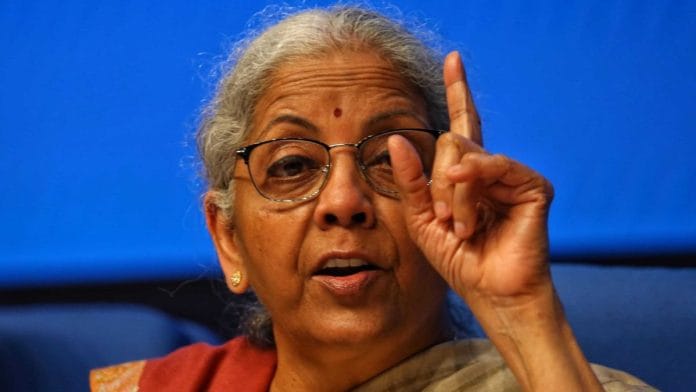New Delhi: To provide employment in rural areas, Union Finance Minister Nirmala Sitharaman announced a multi-sectoral Rural Prosperity and Resilience Programme in the Union Budget 2025-26, which was tabled in Parliament Saturday.
“The goal is to generate ample opportunities in rural areas so that migration is an option, but not a necessity. The programme will focus on rural women, young farmers, rural youth, marginal and small farmers, and landless families,” said Sitharaman.
Addressing a press conference, Union Minister for Rural Development and Agriculture Shivraj Singh Chouhan said that the programme is crucial for making India poverty-free.
“Our effort is to ensure that no one in rural areas is without employment in villages. The Rural Prosperity and Resilience Programme was announced today. For this, we will work with states and take necessary measures to make villages poverty-free…We will try to complete the formalities and get the Cabinet approval for it by 31 March,” said Chouhan.
Elaborating on the plan for the programme, Chouhan said, “We plan to expand our Rural Self Employment Training Institutes (RSETIs) network for skill development training. Currently, we have RSETI centres at district level. The plan is to open them at the block level.”
An initiative by the rural development ministry, RSETIs, which are managed by banks with help from central and state governments, are involved in imparting skill development training to rural youth for entrepreneurship development.
The Rural Prosperity and Resilience Programme will focus on enterprise development, employment and financial independence for rural women. It will push for the creation of new employment opportunities and businesses for young farmers and rural youth.
It will also focus on nurturing and modernising agriculture for productivity improvement and warehousing, especially for marginal and small farmers, and diversifying opportunities for landless families.
Chouhan said that efforts are being made to empower women. The government had set a target of helping three crore self-help group (SHG) members become ‘lakhpati didis’. While 1.15 crore SHG members have become lakhpati didis, Chouhan said efforts will be made to help them become big entrepreneurs.
In the Union Budget 2025-26, Rs 19,005 crore was allocated for the National Rural Livelihood Mission, compared to the revised budget of Rs 15,047 crore for 2024-25.
The total outlay for the rural development ministry was increased to Rs 1,87,754 crore for 2025-26 from the revised estimate of Rs 1,73,912 crore.
While efforts are being made to generate employment in rural areas, there has been no increase in the budget for the Mahatma Gandhi National Rural Employment Guarantee Scheme (MGNREGS).
Also Read:
No increase in budget for rural employment scheme
The allocation for MGNREGS is the same as last year at Rs 86,000 crore. This is despite the fact that the total expenditure to date has been Rs 88,798 crore, according to the scheme’s dashboard.
With an increase in demand for work in rural areas, social activists say the Centre’s decision to not increase the allocation will adversely impact workers.
Social activist Chakradhar Buddha, senior researcher with LibTech India—a New Delhi-based non-profit organisation that uses technology to improve public service delivery in rural India—told ThePrint that the MGNREGS budget for 2025-26 remains unchanged at Rs 86,000 crore, the same as last year.
“Notably, there was no mid-year revision in 2023-24, unlike previous years when allocations typically received an upward revision. As a result, a portion of this year’s budget may go toward clearing pending dues from 2023-24, further limiting funds available for new works and wage payments. This will adversely impact workers,” he added.
(Edited by Radifah Kabir)
Also Read: Flat capex, lower subsidies & higher tax revenue. How Budget 2025 hits a fine fiscal balance






